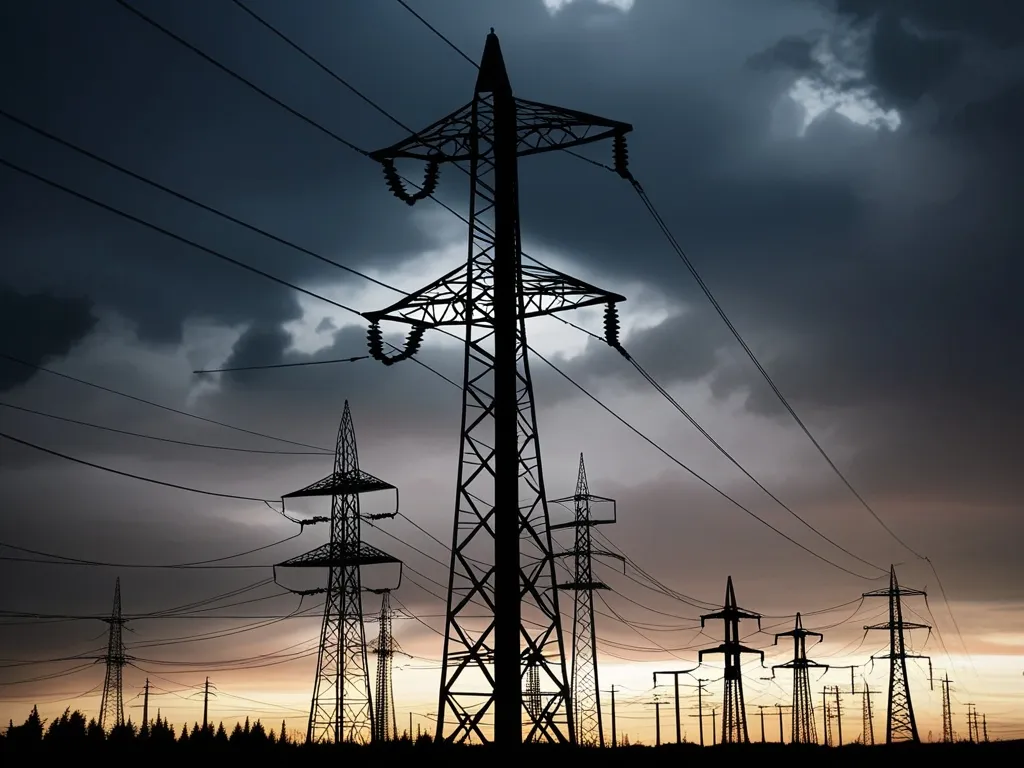The Tunguska Pathogen Hypothesis: Extraterrestrial Microorganism or Military Experiment?
The vast Siberian wilderness holds many secrets, but perhaps none as compelling as the events that transpired on June 30, 1908. On that fateful morning, something extraordinary happened near the Podkamennaya Tunguska River. A massive explosion flattened approximately 80 million trees across 830 square miles of remote forest—an area larger than modern-day New York City.
What could cause such devastation? The traditional explanation points to a meteorite or cosmic object. Most scientists believe that a rocky asteroid or comet entered Earth’s atmosphere and then disintegrated with explosive force[3]. This conventional wisdom persists in scientific circles, suggesting an extraterrestrial chunk of ice or rock was responsible[4].
“Science is not about finding the truth at all, but about finding better ways of being wrong.” - Richard Feynman
But what if the traditional explanation only scratches the surface? What if the aftermath of this cataclysmic event harbored something far more unusual than mere cosmic debris?
Imagine walking through the blast zone decades later. The trees have regrown, but something feels different about this forest. The soil beneath your feet holds unusual microbiological signatures. Russian microbiologists analyzing these soil samples reportedly discovered bacterial formations with molecular structures unlike any known terrestrial organisms. These microbes allegedly contained unusual nucleotide sequences and demonstrated unprecedented radiation resistance.
Have you ever wondered what exists at the boundary between terrestrial and extraterrestrial biology?
The evidence from the Tunguska site presents fascinating complexities. Recent analyses of peat profiles from the disaster region reveal significant environmental impacts. Russian, Italian, and German researchers found notably higher levels of heavy nitrogen and carbon isotopes (15N and 13C) in peat samples corresponding to the 1908 permafrost boundary[5]. The highest accumulation levels were measured precisely at the explosion’s epicenter and along the trajectory of the cosmic body.
“The universe is not only stranger than we imagine, it is stranger than we can imagine.” - J.B.S. Haldane
These findings suggest something remarkable: approximately 200,000 tons of nitrogen rained down on the Tunguska region following the event[5]. This acid rain phenomenon supports a cosmic origin for the disaster. But could this unusual chemical composition have created conditions for novel biological development?
Some researchers propose that evolutionary processes in the blast zone followed unusual patterns. Plant and insect populations within the affected area allegedly showed accelerated mutation rates. Rather than displaying random radiation damage, these genetic changes reportedly followed non-random patterns—as if something was directing these alterations.
What if these patterns weren’t random at all? What if they represented a biological signature from beyond our world?
One particularly bold theory suggests the Tunguska event wasn’t just a meteorite impact but possibly a collision between a meteorite and an alien spacecraft[2]. While this speculation lacks substantial evidence, it highlights our persistent fascination with extraterrestrial explanations for this mysterious event.
A more grounded but equally intriguing hypothesis comes from scientific publications proposing that the Tunguska explosion was a thermonuclear explosion triggered by a “rockburst” after an asteroid entered the atmosphere[1]. This theory suggests that as the universe expands, atoms and ions within solid bodies like asteroids grow larger, creating internal stress. When this stress exceeds the structural force of the solid and external environmental pressure, a “rockburst” occurs[1].
“The most incomprehensible thing about the world is that it is comprehensible.” - Albert Einstein
This theory explains how an asteroid might trigger a natural thermonuclear reaction upon entering Earth’s atmosphere. But could such an event create conditions for novel biological development? Could the intense heat, pressure, and radiation foster evolutionary changes in local microorganisms?
Some accounts suggest Soviet military interest in the region was significant. Stories of biological research stations operating near the site from the late 1940s through the 1960s persist in various narratives. These facilities allegedly collected biological specimens and conducted field tests with organisms from the region. Why would military researchers maintain such interest in this remote location decades after the event?
The environmental impact of the Tunguska event was undeniably profound. Analysis reveals increased concentrations of iridium and nitrogen in the relevant peat layers, supporting the theory that the discovered isotope effects resulted from the catastrophe and were partly cosmic in origin[5]. This unusual chemical composition could theoretically provide a foundation for novel biological processes.
Do you believe life could develop under such extreme conditions? What might that tell us about life’s potential throughout the cosmos?
Atmospheric studies of the region have noted unusual particulate patterns. These biological aerosols supposedly demonstrate remarkable environmental persistence. If true, what might this tell us about the adaptability of life in extreme conditions?
“Life finds a way.” - Ian Malcolm, Jurassic Park
The Tunguska Pathogen Hypothesis presents an alternative perspective on this historic event. Rather than simply being the site of a cosmic impact, could the Tunguska region represent something more profound—a natural laboratory where extraterrestrial materials interacted with terrestrial biology?
Consider the potential implications. If microorganisms with unusual properties developed in the aftermath of the Tunguska event, they might offer insights into evolutionary processes under extreme conditions. They might demonstrate how life adapts to catastrophic environmental changes. They might even suggest mechanisms through which life could transfer between cosmic bodies.
The scientific analysis continues. Researchers studying the Tunguska event note that monitoring similar asteroids and potentially detonating them artificially represents an important task for protecting Earth from devastating disasters[1]. This pragmatic focus on planetary defense reminds us that, regardless of what happened in 1908, similar events could occur in the future.
What would we learn if we could fully analyze the biological aftermath of such an event with modern scientific tools?
The conventional explanation for the Tunguska event remains rooted in astronomy and physics—a cosmic body entering Earth’s atmosphere and exploding with tremendous force. The evidence for this explanation is substantial. Peat samples show isotopic anomalies consistent with this theory[5]. Scientific consensus generally supports some variation of a meteorite or comet fragment as the cause[3][4].
“The important thing is not to stop questioning. Curiosity has its own reason for existing.” - Albert Einstein
Yet science progresses through questioning established theories and examining anomalies. The Tunguska event occurred in a remote region, with detailed scientific investigation delayed by years due to the site’s inaccessibility and political circumstances. This gap in immediate scientific documentation leaves room for alternative hypotheses.
The pathogen hypothesis represents one such alternative perspective. While evidence for exotic microorganisms remains largely anecdotal, the broader question of how extreme events influence biological systems merits serious scientific consideration.
I find myself returning to fundamental questions when considering the Tunguska event. How do catastrophic events shape evolutionary processes? Could cosmic impacts serve as mechanisms for introducing new biological materials to Earth? What might we learn about life’s adaptability by studying organisms in extreme post-impact environments?
The Tunguska mystery continues to capture our imagination precisely because it sits at the intersection of the known and unknown. It represents a documented event with witnesses and physical evidence, yet its remote location and the limitations of early 20th-century science mean we may never fully understand what happened that summer morning in 1908.
Perhaps that’s what makes the Tunguska event so compelling—it reminds us that even in our modern, scientifically advanced world, mysteries remain. The vast wilderness of Siberia still holds secrets, waiting for scientific inquiry to reveal them.
“We are all in the gutter, but some of us are looking at the stars.” - Oscar Wilde
What new perspectives might emerge as we continue to study this remarkable event? What answers might we find in the soil, in the trees, in the very air of this remote region? And what might those answers tell us about our place in a universe where cosmic forces can reshape landscapes in an instant?
The Tunguska Pathogen Hypothesis challenges us to consider the biological implications of cosmic events. Whether or not exotic microorganisms developed in the aftermath, the question itself pushes us to explore the boundaries of life’s potential. And in that exploration, we might discover new insights about life on Earth and its possible connections to the cosmos beyond.






